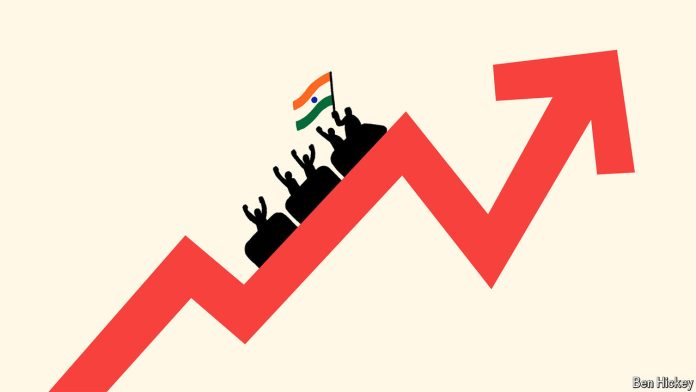Snehin Gupta, Dr. Pabitra Kumar Jena
The Indian stock market has responded positively to Trump’s victory, with both the NSE Nifty 50 and the BSE Sensex indices rising by onepercent.The potential impact of “Trumponomics” on the Indian economy could be shaped by several factors, primarily related to trade, foreign investment, and geopolitical dynamics. While it is difficult to predict with certainty how a second term would unfold, there are a few key areas where his policies could have significant implications:
Trade Relations and Tariffs
During his first term, Trump focused heavily on renegotiating trade deals, emphasizing “America First” policies, and seeking to reduce trade imbalances. India could face increased scrutiny on trade with the U.S., especially in areas like steel, aluminium, and information technology services. Trump’s administration could push for reduced trade deficits by imposing tariffs or placing conditions on imports from India.India could retaliate with tariffs on U.S. goods or take disputes to the World Trade Organization (WTO). Such trade tensions could hurt Indian exporters in sectors like textiles, agriculture, and IT services. The possibility of a U.S.-India free trade agreement (FTA) could be on the table, but this would likely depend on the U.S.’s approach to trade negotiations. Trump’s focus on bilateral agreements, rather than multilateral ones, might open the door to such talks, though negotiations could be challenging.
Immigration and H-1B Visas
Trump has been vocal about reducing immigration to the U.S., especially for skilled workers. If this continues into a second term, India’s tech sector could face challenges, as many Indian professionals rely on H-1B visas to work in the U.S. While this might push companies to hire more locally or offshore work to other countries, it could also prompt India to invest more in upskilling its workforce or attracting foreign investment into its own tech sector. Trump’s stance on immigration also affects the Indian diaspora, a significant component of the U.S. economy. Restrictions on visas could potentially reduce remittances from the Indian diaspora, which is an important source of income for many households in India.
Geopolitical and Security Issues
Trump’s second term could see continued focus on strengthening the U.S.-India strategic partnership, particularly in defense and security. Under the Trump administration, India and the U.S. have cooperated on counterterrorism and defense agreements in the Indo-Pacific region. A second term could lead to more military cooperation and shared defense technologies, which could benefit India’s defense industry and regional security.Trump’s hardline stance on China could lead to further U.S.-India collaboration on countering China’s growing influence in the Indo-Pacific region. This could benefit India in terms of increased strategic and military support, but it could also increase regional tensions.
Investment Flows and Economic Relations
India is a key partner for U.S. companies seeking to access the Asian market, and Trump’s second term could lead to increased Foreign Direct Investment (FDI) from the U.S., particularly in sectors like technology, manufacturing, and defense. However, trade protectionism could make it more difficult for Indian companies to invest in the U.S. or vice versa.The Trump administration’s tax policies, such as the corporate tax rate cuts and repatriation of foreign earnings, could incentivize American companies to shift manufacturing and other operations to countries like India, where labor costs are lower. This could boost India’s manufacturing sector and create jobs, particularly under India’s “Make in India” initiative.
Energy and Climate Change Policies
Trump’s stance on energy policies has increased U.S. oil and natural gas production and reduced dependence on foreign imports. In the second term, this could affect energy markets globally. India could see changes in energy pricing or become more reliant on U.S. energy exports, particularly in the natural gas and coal sectors.Trump’s policies on climate change have typically been more industry-friendly and less focused on global climate agreements. If the U.S. continues to pull back from international climate accords, it may reduce the pressure on India to meet emissions targets. However, this could also affect the pace of green energy innovation, which India has been increasingly pursuing as part of its renewable energy agenda.
Global Economic Policies
Trump’s “America First” approach often meant disengagement from multilateral institutions like the United Nations, WHO, and WTO. While this could lead to a more fragmented global economic order, India may seek to fill the vacuum in areas like international trade rules, environmental governance, and global health, aligning with like-minded countries.Trump’s policies to reduce reliance on China (and other countries) for key supplies may benefit India as companies look to diversify their supplychains. India could be an alternative destination for manufacturing, especially if trade tensions between the U.S. and China escalate.
Technology and Intellectual Property
Trump’s administration was tough on countries perceived as violating Intellectual Property(IP) rights. India may face pressure from the U.S. to strengthen its IP laws, particularly in the pharmaceutical and technology sectors. While this could benefit U.S. firms, it may limit India’s ability to produce generic medicines and affordable tech solutions. A focus on increasing U.S. competitiveness could result in more stringent IP protection rules, which could affect Indian tech firms’ ability to collaborate and innovate freely with U.S. firms. However, it may also drive India to develop more homegrown innovations and IP protection frameworks.
A second term for Donald Trump as U.S. President could create both opportunities and challenges for the Indian economy. On the one hand, closer defence ties, increased investment, and potential benefits from the diversification of global supply chains could boost India’s economic standing. On the other hand, trade tensions, immigration restrictions, and potential policy shifts on issues like IP and climate could present significant hurdles. India’s ability to adapt to these changes will likely depend on how effectively it can navigate the evolving global landscape and capitalize on growth opportunities.
(The authors are Research Scholar, Department of Economics, University of Jammu & Assistant Professor, School of Economics, Shri Mata Vaishno Devi University, Katra.)
Trending Now
E-Paper


